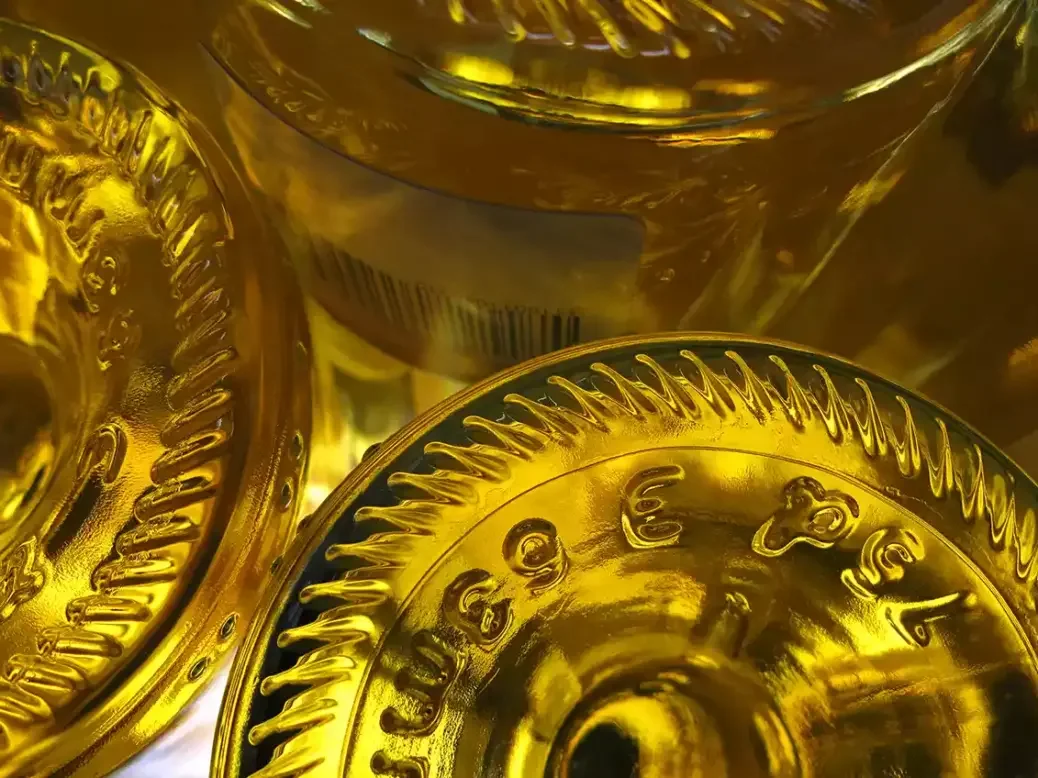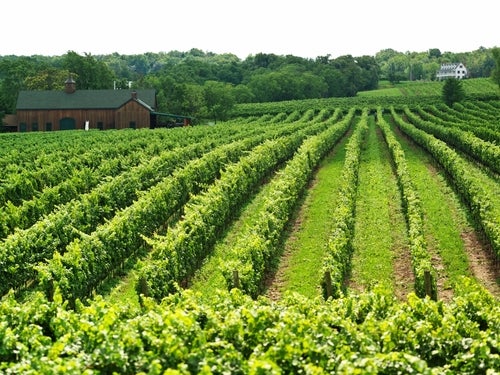
In his latest dispatch from the Bordeaux 2023 en primeur tastings, Simon Field MW reflects on the evolving challenges and enduring rewards of Sauternes.
François Amirault has supervised 40 harvests at Château de Fargues. All have been different, with the past, he affirms, providing few signals to the future, at least when it comes to the vagaries of making fine Sauternes. 2023 was the year of the death of Alexandre de Lur Saluces, owner of de Fargues and, before that of Château d’Yquem. An oak tree has been planted in front of the medieval donjon and a limestone plaque commemorates one of the region’s greatest champions. The slightly melancholic atmosphere is heightened when François reveals that he is to retire this year. We joke about differing retirement ages in our respective countries, and he suggests that President Macron was right to raise the pensionable age and ought to do so again. There is no analysis of whether or not Sauternes itself is moribund.
What makes Sauternes challenging, according to Amirault, is the variable which it adds to the already unpredictable winemaking canon, namely the onset of botrytis itself. What fascinates him is the correlation between phenolic maturity and the meteorological coincidence of rain, mist, humidity, and sunshine, all difficult to forecast on their own, let alone in a sequence preferable to the onset of that most glorious of vinous oxymorons, noble rot. It happens every year, yes, but each year is different, sometimes dramatically so.
The long view of Sauternes
Taking a long view, the main difference between today’s harvest and that of 20 years ago is today’s need, once the botrytis has set in, to harvest at great speed. In 2023 the onset was uniform and took place in the first week of October (“a massive attack” was how Jean-Jacques Dubourdieu at Doisy Daëne describes it) and the number of picking outings (les tries) was far fewer than usual, with one or two all that was required, itself posing logistical problems when it came to ensuring that there were enough pickers. In some properties, however, especially those with more Sauvignon Blanc (Sémillon now makes up 75% of the vines, we should remember), there may have been preliminary tries, generally, admits Laurier Girandot at Coutet , for gapes that were passerillés (shrivelled) rather than actually rotten. In general, however, 2023 witnessed a fast and furious harvest in early Ocober, and one which was finished well in advance of the heavy rains which came on the 18Th. Yields, at 12.5 hl/ha, were a little down on both 2022 (14.5 hl/ha) and the ten year average (14.2 hl/ha), but not back in the disaster zone of 2021 ( 3.5 hl/ha) when all everyone could talk about was the urgent need for the introduction of a new appellation for dry Sauternes.
A good sign surely? Simon Leporte at Lafaurie-Peyraguey thinks so. This is only his second vintage and even if he didn’t quite manage to achieve the phenomenal level of residual sugar of 2022 (225 grams!) he was happy enough with the 180 that he has notched up. 2023, despite not quite scaling the heights of indulgence of 2022 is being recognized as a powerful, structured year, more in the vein of, say, 2005, 2009, and 2015 than in the style of more “elegant” years such as 2014 or 2011. There is, of course, a healthy constituency who favor the more elegant and delicate style, including Laurier Girardot at Coutet, who goes against the flow a little when he says that his 2023 is most like 2014. It does not lack elegance for sure, and the same can be said for the very classy Château Climens, thereby perhaps underlining the traditional differences between Barsac and Sauternes, stylistically speaking.
Francois Amirault points out the “new” dilemma involved in making Sauternes today, in that the grapes are fully mature far earlier (the middle of August) but that one still has to await the rains and the onset of the rot. There will be a thickening of the skins in the interim (especially when the interim is as hot as it was in August 2023) and a degree of degradation of both malic and tartaric acid. This will potentially jeopardize both the efficiency of the botrytis attack and the resulting profile of the wine; it will also make the task of achieving successful balance between residual sugar and alcohol by volume more challenging.
This balancing act once again calls upon variables and explains the multiplicity of styles evidenced in what, prima facie and given the uniformity of the onset of the noble rot in 2023, would appear to be a fairly homogeneous harvest. Nothing is ever easy in Sauternes, and nothing is predictable. It represents, in every sense, an antidote to mechanization and “interference.” It is a source of endless fascination and, at its best, unparalleled pleasure. It is little wonder that Monsieur Amirault is not quite ready to retire after a mere 40 vintages at de Fargues.
Bordeaux 2023 Field notes: Out of sorts?
Bordeaux 2023 Field notes: Château La Tour Figeac—La Chartreuse de St-Emilion
Bordeaux 2023 Field notes: House of cards
Bordeaux 2023 Field notes: Single spies






